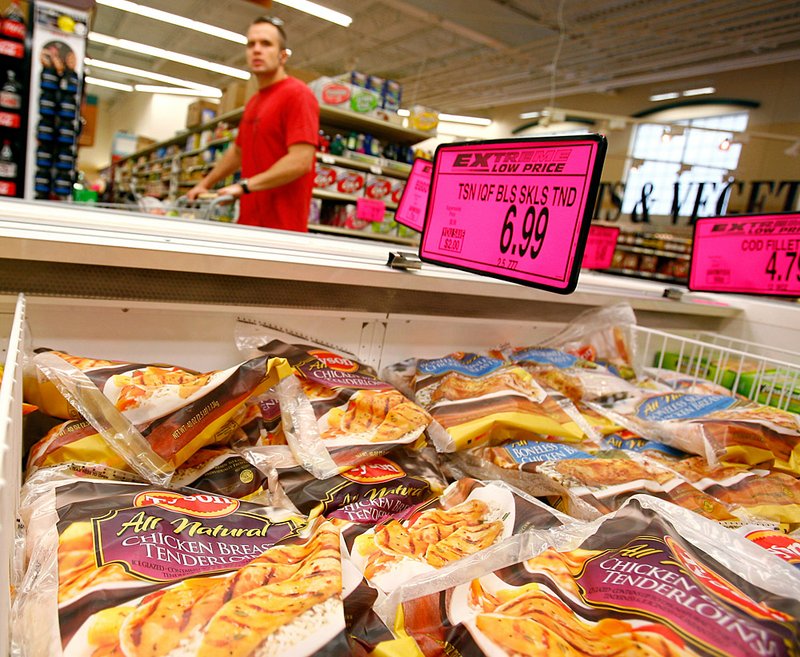Higher meat prices played a tug-of-war with rising grain costs to keep Tyson Foods Inc.’s profits flat in a second quarter in which the Springdale meat processor’s revenue hit a new record.
Net income for the quarter that ended April 2, was $159 million, the same net income reported in the same quarter last year.
Earnings per share were 42 cents, below analysts expectations of 43 cents, but the same earnings per share reported in the same quarter last year.
Sales for the quarter reached $8 billion, 15.61 percent above last year’s second-quarter sales of $6.92 billion.
Donnie Smith, Tyson’s president and chief executive officer, attributed the record sales to higher meat prices overall.
Smith, speaking during a media conference call Monday, called the quarterly performance a solid showing in a challenging economic climate.
Shares of Tyson Foods closed at $17.75 Monday on the New York Stock Exchange, down $1.14 or 6.03 percent. The stock has traded between $14.59 and $20.12 in the past year.
In late April, Tyson competitor Pilgrim’s Pride Corp. reported a net loss of $120.8 million, or 56 cents per share, on net sales of $1.9 billion for the first quarter 2011 that ended March 31. Pilgrim’s Pride Corp. is owned by Brazilian meat processor JBS SA.
Climbing gasoline prices have a dampening effect on consumer spending, Smith said. And rising grain prices will have to be passed through to the consumer in the price of meat at restaurants and in the grocery store, he said.
Tyson’s Chief Operating Officer Jim Lochner said during the conference call that the cooler temperatures and a late Easter holiday also have softened demand for grilling meats, traditionally beef and pork, in the second quarter.
Lochnar said that consumers have already been changing from buying upper and mid-range beef cuts to cheaper ground beef and, ultimately, to chicken as a better value for the food dollar.
“The consumer has had the luxury of very reasonable prices for a long time. Unfortunately, that is no longer true,” Lochner said.
Even with the possibility of higher meat prices slowing down consumer demand, Tyson Foods is well positioned to finish out fiscal 2011, Smith said.
Dennis Leatherby, Tyson’s chief financial officer, summed up the company’s standing.
“Overall, we have a great financial position with solid debt ratios along with a strong balance sheet and capital structure. This will enable us to continue delivering results in a challenging environment,” he told analysts in a conference call Monday.
Some analyst questioned Tyson’s plan for poultry production, citing the industry’s historical reaction of cutting supplies to raise chicken prices.
Christina McGlone of Deutsche Bank Securities asked if Tyson would consider poultry production increases for the last half of fiscal 2011.
Smith answered that keeping the supply of poultry in line with consumer demand is the primary driver of Tyson Foods’ production schedule.
He said that production projects for the end of the year anticipate low single digit growth for the end of 2011.
He also reassured D.A. Davidson & Co. analyst Tim Ramey that the loss of about 200,000 chickens during the tornados that moved through Alabama and surrounding states recently will not have a measurable effect on chicken prices
“We expect to see stronger impact on pricing from the continued strong export demands more than the storms,” Smith said Monday.
The company is looking to moving more of its chicken supplies from export to the domestic market, Smith said.
Business, Pages 21 on 05/10/2011
